'Arabian Ark' helps save wildlife from extinction
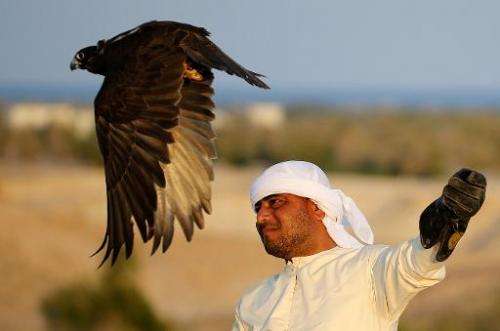
Oryx, giraffes and cheetahs roam an "Arabian Ark" nature reserve on a desert Gulf island where species once facing extinction in the region are making a comeback.
Since animals were first brought to Sir Bani Yas off the coast of Abu Dhabi more than four decades ago, their total population has soared to more than 13,000.
Twenty-five species of mammals and 170 types of birds are found in a nature reserve covering an area of 1,400 hectares (3,500 acres).
They include striped hyenas, caracals—also known as the desert lynx—and the Arabian tahr, a small goat-like mammal indigenous to the Hajar Mountains between the UAE and Oman.
Some species are, or were, endangered in the region, or even extinct in the wild.
The reserve began as an initiative by late UAE founder Sheikh Zayed Bin Sultan al-Nahayan who started bringing animals to Sir Bani Yas in 1971.
"He started developing the island into a nature reserve and the idea back then was to create an Arabian Ark for his people," said Marius Prinsloo, general manager of operations at the island.
"We have been successful," he said of the conservation efforts.
'Great results'
Sir Bani Yas is now home to about 500 Arabian Oryx—one of the world's largest herds.
Sameer Ghani, an independent conservation specialist, said the reserve's Arabian Oryx breeding programme was showing "great results" after the animal "went extinct in the wild in the early 1970s".
A type of antelope, they once roamed most of the Arabian Peninsula but rampant hunting meant that for years they survived only in captivity.
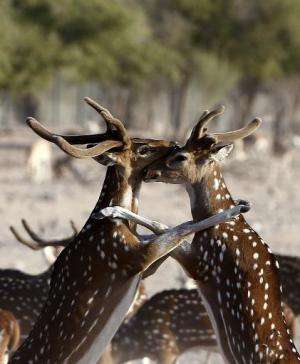
Conservationists believe the last remaining Arabian Oryx in the wild was shot and killed in the Omani desert in 1972.
They were bred and reintroduced in the UAE and other countries, resulting in their removal in 2011 from the global list of endangered species by the International Union for Conservation of Nature, which now classifies them as vulnerable.
Sand and mountain gazelles have also found a natural habitat on Sir Bani Yas.
In 2008, four cheetahs were brought to the island to help maintain a natural balance.
The cheetah—the world's fastest land animal—was indigenous to the region but believed to have become extinct in the wild in the Middle East in the early 1970s.
Bred or raised in captivity, the four cheetahs were taught to survive and hunt for themselves, feeding mainly on sand gazelles.
In 2010, the first cheetah cubs were born on the island.
Ghani said the biggest challenge of the conservation programme was "re-wilding"—educating animals raised in captivity to survive on their own.
The animals "eventually become part of the natural population of the island".
Planting mangroves
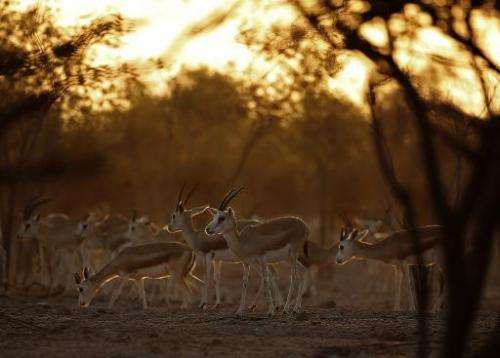
Non-indigenous animals including the scimitar-horned oryx, the reticulated giraffe and blackbuck antelopes have also been introduced in the park.
Every visitor to the island is urged to plant a mangrove and if they do not then the reserve does it for them.
About 2.5 million trees have been planted on Sir Bani Yas, which after decades closed to the public was opened to tourists six years ago offering African-style safaris.
Sir Bani Yas, located around 170 kilometres (106 miles) from the capital of Abu Dhabi, is also home to the remains of a pre-Islamic monastery and other archeological remains.
"In 1992, we began exploration and excavation works and have since uncovered 36 archeological sites, most importantly a Christian monastery dating back to 600 AD," said Fatima Mutawaa of the Tourism Development & Investment Company, which is developing Sir Bani Yas.
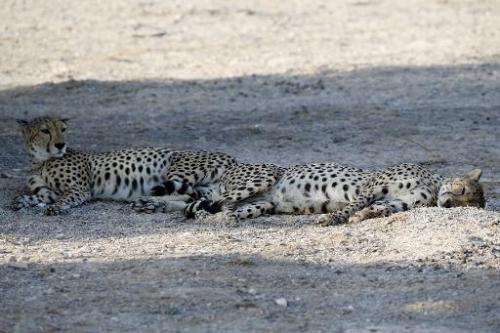
The sites "reflect the diverse cultures that have thrived on this island," said Mutawaa.
The monastery is believed to have been built by a community of 30-40 monks who probably belonged to the Nestorian Church. It is thought to have been abandoned after about 750 AD.
While it has an airport and three luxury resorts, Sir Bani Yas has largely preserved its natural character, in stark contrast to the glitzy shopping malls and skyscrapers of Abu Dhabi and Dubai, the capital of the United Arab Emirates.
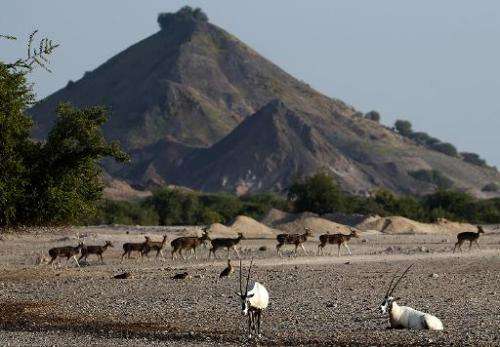
"Sir Bani Yas offers an amazing natural landscape of wadis (valleys) and salt stones and beaches," said Mark Eletr, director of four resorts on the island run by Thai group Anantara.
"People are experiencing this now and enjoying a very raw natural environment."
© 2015 AFP



















